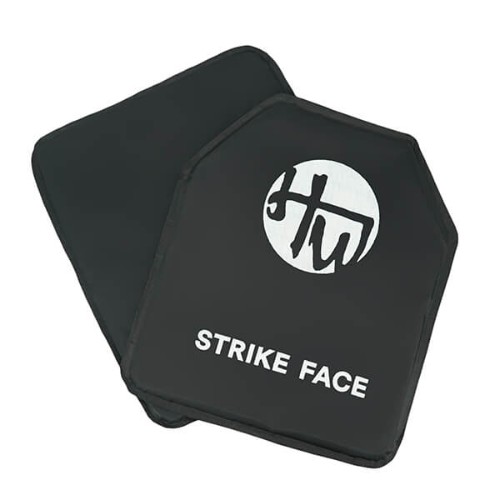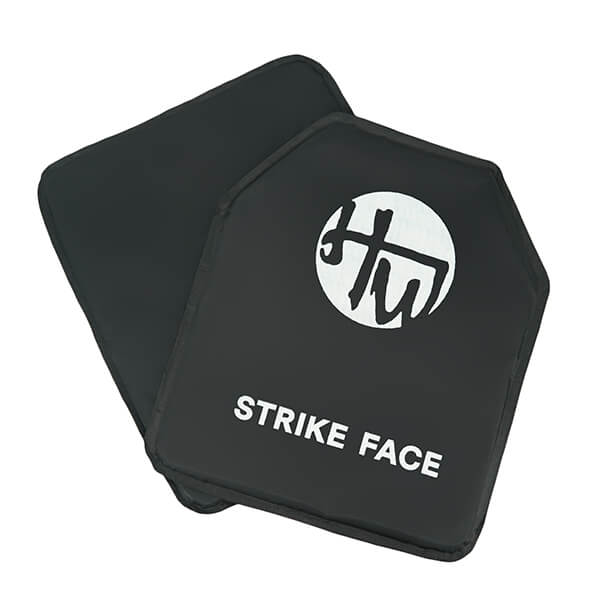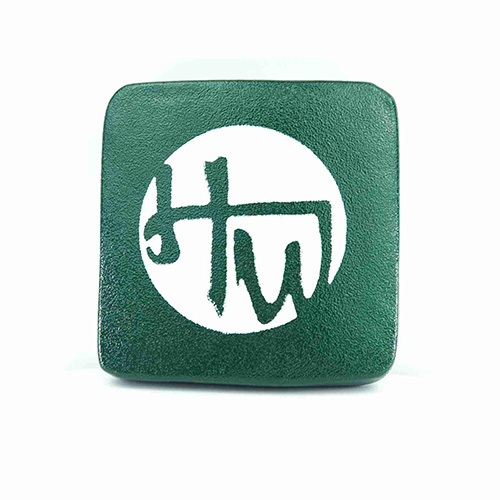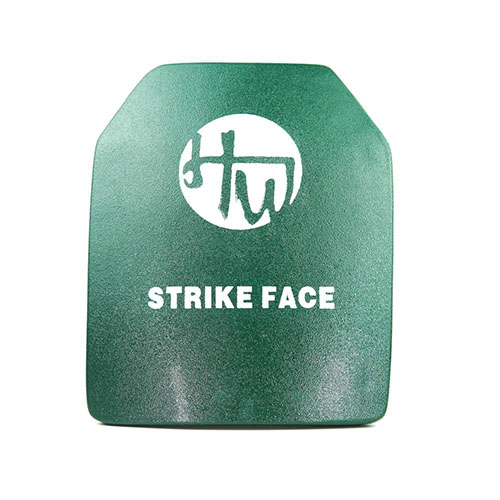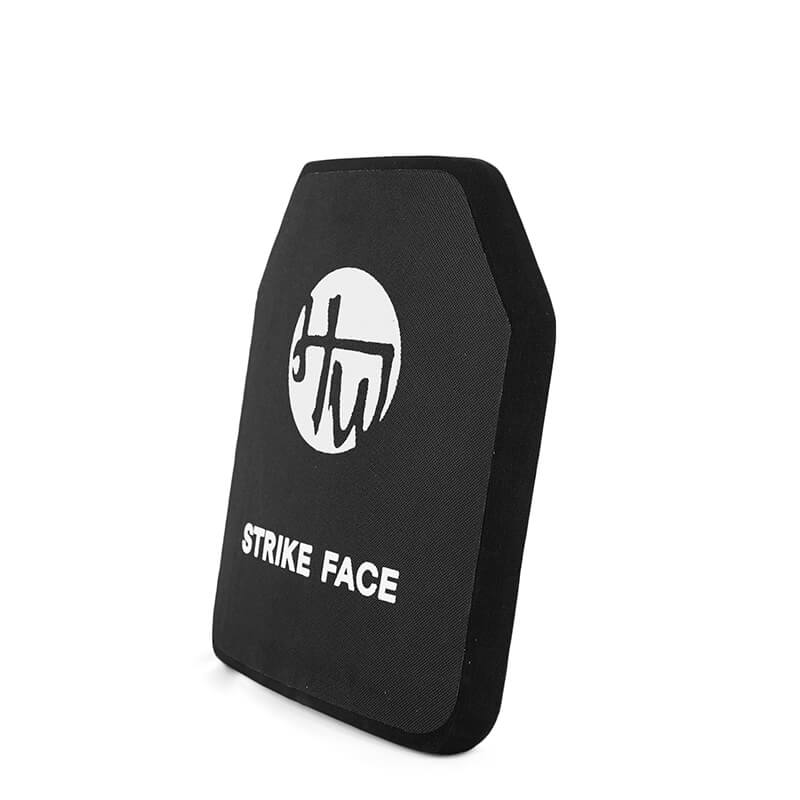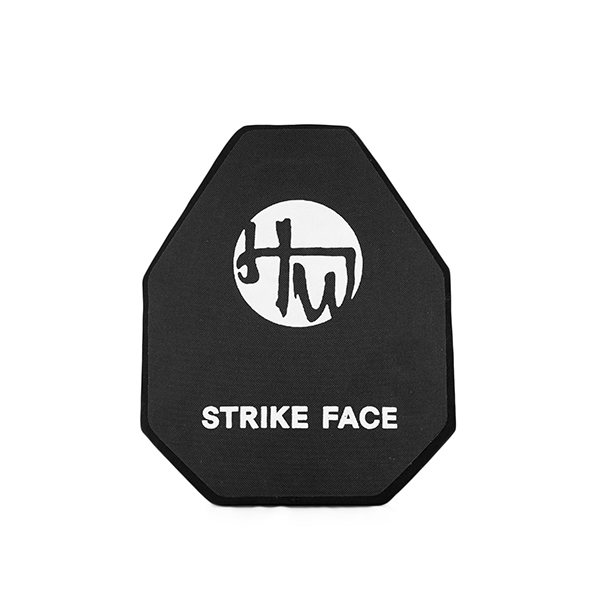Ballistic Plate Wholesale Manufacturer – Reliable Protection for Military, Police and Security Use
H WIN is a manufacturer specializing in the production and wholesale supply of ballistic plates for body armor systems.
We design and produce armor solutions that combine tested protection levels with stable manufacturing quality and on-time delivery.
Our plates are used by military forces, law-enforcement agencies and security companies around the world.
We control the entire process —from raw material selection to ballistic testing and packaging— ensuring that each plate delivers consistent performance under real field conditions.
H WIN Ballistic Armor Plate Series
Ballistic plates are the core component of modern body armor. They absorb and disperse energy from rifle or handgun rounds to reduce trauma to the wearer.
H WIN supplies body armor plates that meet NIJ Level III and Level IV standards, providing multi-hit resistance against 7.62 mm and .30-06 AP ammunition.
Each plate is available in different materials—ceramic + PE composite, UHMWPE, or armored steel—to balance protection, weight and cost.
We focus on practical engineering and long-term supply stability for bulk orders and OEM projects.
SAPI Plates
SAPI Plates for Level III & IV Protection [...]
11×14 Soft Armor Plates
NIJ Level IIIA 11x14 Ballistic Soft Armor Plates From [...]
10×12 Soft Armor Plates
Level IIIA Soft Body Armor Plates 10x12 Inserts [...]
10×12″ Level III Pure Polyethylene Plates
Level III 10×12" Pure Polyethylene Plates [...]
Level IV 6×6” Polyurea Ballistic Plate
High Quality Level IV 6x6 Polyurea [...]
Level IV 10×12” Polyurea Ballistic Plate
Product Details Level [...]
NIJ Level III 11 x 14 x 1 Hard Armor Plate
High Quality Level III 11 [...]

11×13.4” Level III Lightweight Multi Curve Ballistic Plate
Wholesale 11x13.4" Level III Multi Curve [...]
Level IV 11×13.4” Multi-Curve Ballistic Plate
Level IV 11x13.4" Multi-Curve Ballistic Plate [...]

Level IV 10×12” Lightweight Single-Curve Bulletproof Plate
H Win 10x12" Level IV Lightweight [...]

Level IV 10×12” Lightweight Multi-Curve Bulletproof Plate
Product Details [...]
Level IV 10×12” Ballistic Plate
Level IV 10x12'' Ballistic Plate Product [...]

10×12″ Level III Single Curve Lightweight Bulletproof Plate
10x12 Level III Single Curve Bulletproof [...]
10×12″ Level III Multi Curve Plates
10x12" Level III Multi Curve Plates [...]
10×12″ Level III PE+ Alumina Body Armor
10×12" Level III PE+ Alumina Body [...]
Get A Quote Now!
Contact H WIN today for technical consultation or bulk order quotation.
Ballistic Plate Manufacturing and Testing
H WIN’s factory operates with precision cutting, lamination and hot-pressing equipment. Ceramic layers are formed through vacuum sintering to increase hardness and impact resistance. PE backing layers are compressed under high pressure to ensure dimensional stability and bonding strength.
Every plate is subjected to:
- Ballistic multi-hit testing per NIJ procedure
- Drop and edge impact tests
- Environmental tests for heat, humidity and water exposure
We record each production batch with traceable inspection data. This system keeps product quality consistent and meets export requirements for defense equipment.
Customization & OEM Service
H WIN provides full OEM and ODM support for body armor brands and government projects. Customization covers plate shape, thickness, protection level and surface finish.
Options include:
- Polyurea coating for waterproof and shock resistance
- Nylon fabric cover for lightweight tactical use
- Color finishes in black, olive, or desert tan
- Logo printing and labeling for brand visibility
Low MOQ orders are accepted for sample testing or pilot batches. Once design approval is confirmed, we scale production quickly to meet bulk demand. All client information and drawings remain confidential.
Armor Plate Material Technology
Ceramic Composite
Alumina or silicon-carbide ceramics paired with UHMWPE backing absorb kinetic energy and crack bullets on impact, reducing penetration.
UHMWPE Plates
Lightweight solution with excellent multi-hit resilience and zero corrosion. Preferred for maritime and tropical operations.
Armored Steel
Durable and cost-efficient for training or budget-sensitive contracts.
Each material option undergoes real ballistic testing —not lab simulation— to guarantee reliable data for clients and certification agencies.
Applications Fields of Ballistic Plates
- Military armors and combat vests
- Police SWAT and riot control equipment
- Private security and executive protection
- Body armor assembly lines and OEM manufacturers
- Testing and training institutions
Partnership and Service
H WIN values long-term cooperation over one-time transactions. We offer technical documentation, ballistic test results, and sample evaluation before mass orders. Our service team responds quickly to inquiries and coordinates shipment schedules with full export support.
Whether you represent a defense contractor or a body armor brand seeking OEM production, H WIN delivers efficient, accurate and secure supply solutions.
Why Choose H WIN As Your Supplier?
1. Independent Manufacturing
In-house production guarantees fast turnaround and consistent output.
2. Certified Testing
All models comply with NIJ and VPAM standards, supported by official test reports.
3. OEM Flexibility
Adaptable design and branding services for private-label orders.
4. Stable Global Supply
Experienced in shipping bulk orders to Europe, the Middle East, and Asia with export-grade documentation.
5. Technical Support
Our engineers assist clients with specification adjustments and ballistic performance evaluation.
Complete Guide to Ballistic Plates for Body Armor
What Are Ballistic Plates
Ballistic plates, also known as body armor plates, are protective inserts placed inside body armor carriers or tactical vests. They are designed to absorb and stop bullets from rifles or handguns by dispersing impact energy across multiple layers.
Each plate follows international ballistic standards such as NIJ Level III and Level IV, defining the type of ammunition it can resist. In practical use, ballistic plates are the critical component that turns a soft vest into full rifle-rated protection. Without them, a vest can only stop pistol rounds. With them, it can withstand powerful rifle threats faced by soldiers, SWAT units, and security forces.
Ballistic Protection Levels Explained
Ballistic protection levels are defined by international testing standards. The most recognized is the NIJ (National Institute of Justice) system, which classifies armor based on the type of threat it can stop. Each level reflects a specific ammunition velocity and impact energy.
| NIJ Level | Type of Threat | Typical Material | Common Use |
|---|---|---|---|
| Level IIA | 9 mm FMJ, .40 S&W JSP | Soft Aramid or PE Fabric | Light police vests, concealed armor |
| Level II | 9 mm + .357 Magnum JSP | Soft Aramid or PE Fabric | Patrol vests, covert security gear |
| Level IIIA | .357 SIG, .44 Magnum | Flexible Soft Armor Panels | Standard law-enforcement vests |
| Level III | 7.62 mm FMJ (308 Win) | Hard PE or Ceramic + PE | Military and SWAT armor plates |
| Level IV | .30-06 AP (armor-piercing) | Ceramic + PE Composite | High-threat missions and tactical ops |
Soft Armor (Level II–IIIA)
Soft armor is made from woven aramid or UHMWPE fabrics that flex with body movement while stopping handgun rounds.
It’s lightweight, comfortable, and suitable for daily police duty, VIP protection, and concealed wear.
Hard Armor (Level III–IV)
Hard ballistic armor plates are rigid panels engineered for rifle-rated protection.
They’re typically inserted into tactical carriers or external vests.
Using ceramic + PE composites or solid UHMWPE, they defeat high-velocity rifle rounds and armor-piercing ammunition.
Hard vs. Soft Body Armor Plates
| Feature | Hard Plates | Soft Inserts |
|---|---|---|
| Material | Ceramic, Steel, UHMWPE | Aramid, PE Fabric |
| Flexibility | Rigid | Flexible |
| Protection Level | III–IV | II–IIIA |
| Weight | Heavier | Lightweight |
| Usage | Tactical, Military | Police, Security |
A full armor setup often combines the two: soft armor panels for mobility, and hard ballistic plates for front and back coverage during combat or high-risk duty.
How Ballistic Plates Work
The protection mechanism is based on energy dissipation and material deformation.
When a bullet strikes the plate, the outer ceramic layer fractures to spread impact energy, while the PE or aramid backing absorbs the remaining force.
In steel plates, the bullet flattens and disperses energy through heat and deformation.
In UHMWPE plates, high-density fibers align to catch and slow the projectile, preventing penetration.
A properly designed ballistic armor plate stops the round while keeping backface deformation within safe limits — preventing blunt trauma to the wearer.
Selecting the Right Ballistic Plate
When choosing ballistic armor plates, consider these key factors:
- Protection Level: Match NIJ rating to operational threat.
- Material: Ceramic and PE for high protection with reduced weight; steel for durability.
- Weight and Comfort: Long missions require lightweight composite solutions.
- Curvature: Single-curve or multi-curve plates improve fit and mobility.
- Environment: Waterproof coatings (polyurea or nylon) help resist humidity and corrosion.

